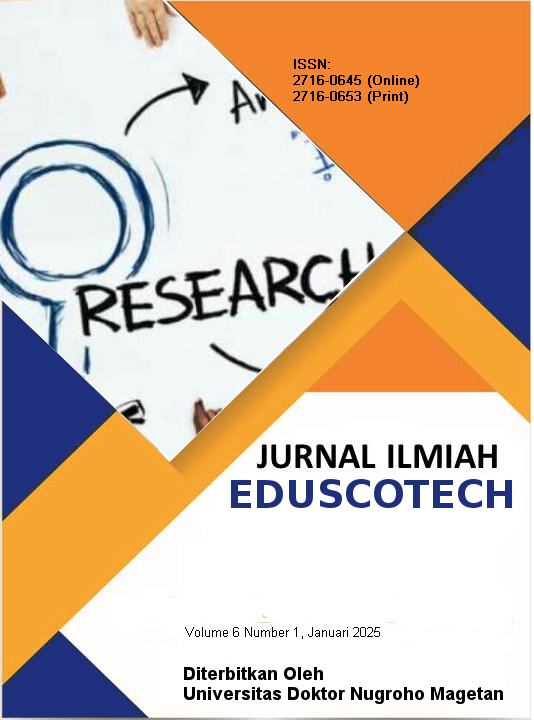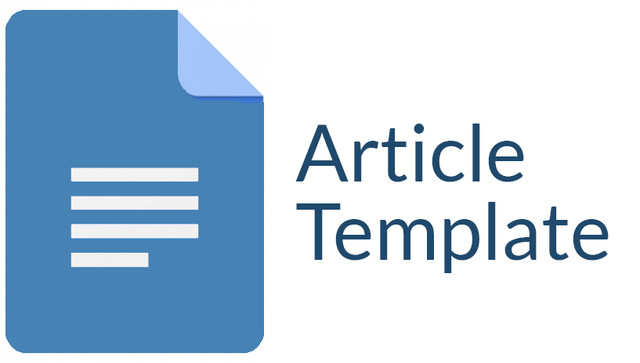Pengaruh Pendekatan SAVI (Somatis, Auditori, Visual, Intelektual) terhadap keterampilan Berpikir Kritis Siswa Pada Materi Interaksi Sosial dalam Pembelajaran IPS Kelas V SDN Unggulan Magetan
Keywords:
SAVI Approach, critical thinking, social interaction, Social StudiesAbstract
This study aims to determine the effect of the SAVI (Somatic, Auditory, Visual,Intellectual) approach on students' critical thinking skills in social interaction in Social Studies (IPS) learning. The SAVI approach was chosen because it is considered capable of accommodating various student learning styles and encouraging active engagement in the learning process. The research method used was a quasi-experimental design with a pretest-posttest control group design. The subjects consisted of two eighth-grade students at a public junior high school in City X, selected purposively. The instruments used were a critical thinking test based on Ennis' critical thinking indicators and an observation sheet for student learning engagement.The data analysis showed a significant difference between the posttest results of the experimental and control groups. Students who participated in learning using the SAVI approach demonstrated greater improvement in critical thinking skills compared to students who participated in conventional learning. This indicates that the SAVI approach is effective in enhancing students' ability to analyze, evaluate, and draw conclusions about information related to social interaction.The implication of these findings is that the SAVI approach can be a relevant and innovative alternative learning strategy for improving the quality of student learning processes and outcomes, particularly in developing critical thinking skills in social studies.
Downloads
References
Cahyono, B. Y., & Kurniawan, D. (2020). Pengembangan keterampilan berpikir kritis dalam pembelajaran IPS di sekolah dasar. Jurnal Pendidikan dan Pembelajaran, 14(2), 145- 156.
Facione, P. A. (2015). Critical thinking: What it is and why it counts. Insight Assessment.
Kusuma, R. A. (2021). Implementasi pendekatan SAVI dalam meningkatkan keterampilan berpikir kritis siswa SMP. Jurnal Pendidikan Inovasi, 9(1), 45-58.
Sriyono, I. (2022). Pendekatan SAVI untuk meningkatkan kreativitas dan keterampilan berpikir kritis siswa dalam pembelajaran sejarah. Jurnal Pendidikan Sejarah, 19(3), 102-113.
Suhartanto, A. A. (2016). Penerapan Metode Profile Matching Dalam Penilaian Kinerja Guru Untuk Kompetensi Pedagogik. Bianglala Informatika, 4(2).
Mayer, R. E. (2009). Multimedia learning. Cambridge University Press. Woolfolk, A. (2016). Educational psychology (12th ed.). Pearson.
Zimmerman, B. J. (2000). Attaining self-regulation: A social cognitive perspective. In M. Boekaerts, P. R. Pintrich, & M. Zeidner (Eds.), Handbook of self-regulation (pp. 13-39). Academic Press.
Pratama, D. (2020). Pendekatan SAVI dalam pembelajaran interaktif untuk meningkatkan keterampilan berpikir kritis siswa pada mata pelajaran matematika. Jurnal Pendidikan Matematika, 18(2), 105-112.
Reid, R., & Kroll, L. (2019). Learning through active engagement: The impact of SAVI approach on student performance in social studies. Journal of Social Science Education, 18(4), 235-247.
Robinson, R., & Johnson, L. (2021). Exploring critical thinking and collaborative learning in the context of multimedia learning environments. Journal of Educational Psychology, 23(1), 58-74.
Downloads
Published
Issue
Section
License

This work is licensed under a Creative Commons Attribution-ShareAlike 4.0 International License.
Authors who publish with this journal agree to the following terms:
1. Copyright on any article is retained by the author(s).
2. The author grants the journal, right of first publication with the work simultaneously licensed under a Creative Commons Attribution License that allows others to share the work with an acknowledgment of the work’s authorship and initial publication in this journal.
3. Authors are able to enter into separate, additional contractual arrangements for the non-exclusive distribution of the journal’s published version of the work (e.g., post it to an institutional repository or publish it in a book), with an acknowledgment of its initial publication in this journal.
4. Authors are permitted and encouraged to post their work online (e.g., in institutional repositories or on their website) prior to and during the submission process, as it can lead to productive exchanges, as well as earlier and greater citation of published work.
5. The article and any associated published material is distributed under the Creative Commons Attribution-ShareAlike 4.0 International License









